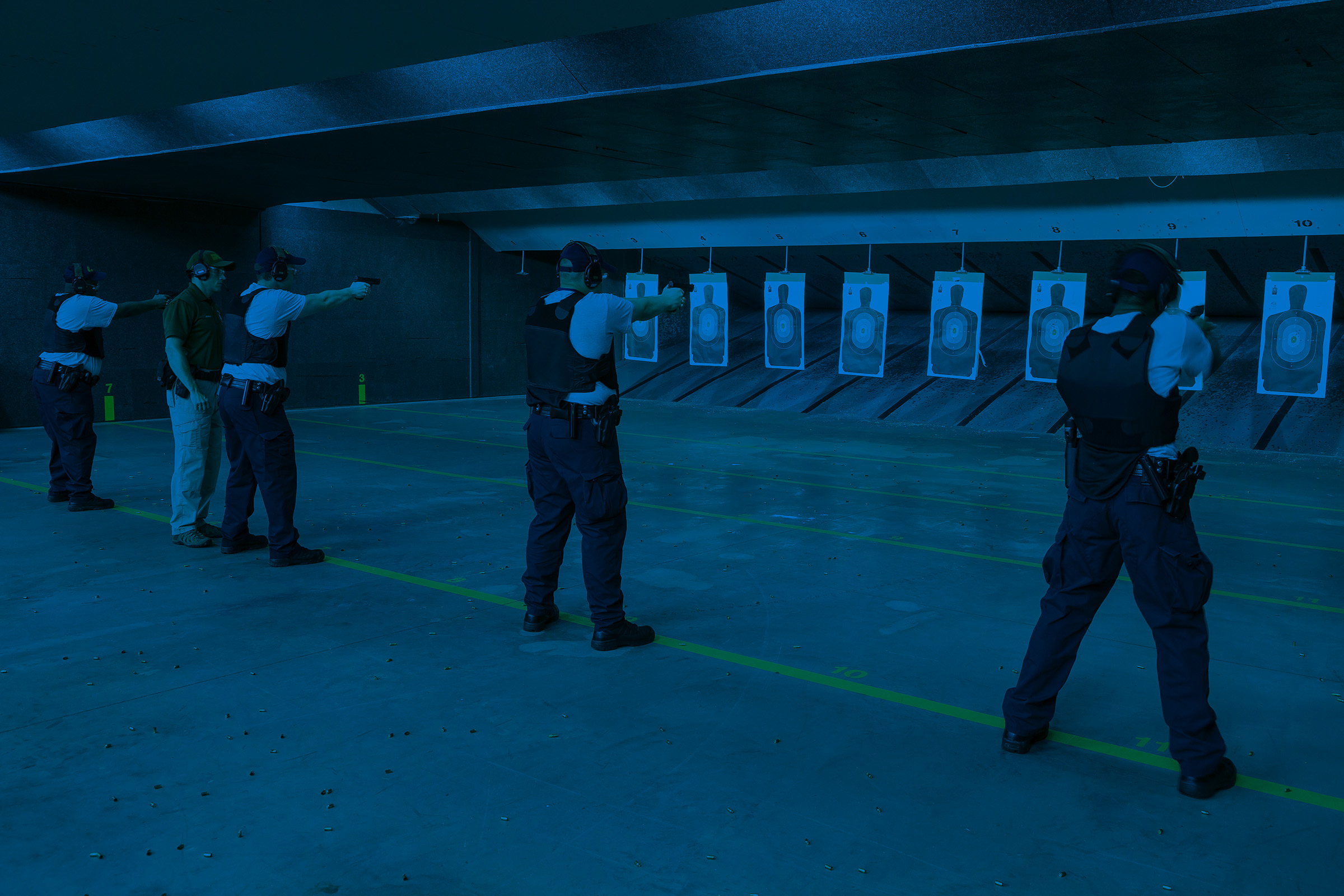
It is a dangerous time to be a law enforcement officer. With 106 on-duty fatalities in the United States in 2018, 51 of which involved firearms, the need for increased vigilance and readiness has never been more evident. Today’s law enforcement professionals are faced with a range of complex and unpredictable threats. The use of more powerful weapons, the risk of terrorism, and urban guerilla tactics has helped to define the environment in which first responders operate.
The days of qualifying at the firing range and immediately hitting the street are over. Today’s training must integrate every aspect of a law enforcement encounter, from conversational contact to the use of deadly force.
While the answer to these problems must be holistic, including elements such as better intelligence, community awareness and education, crime fighting tools, weapons, and technology, modern training plays a critical role in preparing officers to respond to evolving threats. Training, and consequently, training facilities, must adapt to the changing face of threat and accommodate training techniques and programs that prepare officers for real world events. The days of qualifying at the firing range and immediately hitting the street are over. Today’s training must integrate every aspect of a law enforcement encounter, from conversational contact to the use of deadly force.
To meet these training needs requires undertaking a design process unique to the development of law enforcement firearms training centers. The design of law enforcement training facilities requires specialized expertise to effectively and safely simulate real world scenarios. Firearms training in particular must be conducted not only for capability and accuracy, but also for the simulation of encounters where officers must make critical decisions while evaluating any number of conditions and physical requirements.
Further, the modern training facility must be able to integrate skills used on a daily basis by law enforcement such as driving, defensive hand-to-hand tactics, verbal confrontations, and the ability to de-escalate, or escalate if necessary, the encounter. The physical facility in which this training takes place must accommodate, and evolve with, these types of complex training programs. With this in mind, the challenge is to develop a training facility that not only meets the current needs and requirements of the user, but can also support evolving training techniques and requirements.
Beyond the tactical requirements of the facility, the technical expertise needed to create a safe and healthy environment for the instructors and trainees is critical. Where firearms are used, high levels of lead and noise can pose significant health risks to shooters and instructors if not properly mitigated. For driving and use of force simulators, creating a realistic environment while not disturbing neighboring classes is a priority. As budgets are typically constrained, creating training spaces that can double as gyms, defensive tactics dojos, and classrooms is very desirable.
The overall training facility must be maintainable, safe, realistic, adaptable, and be representative of the conditions law enforcement will encounter in their working environment. Only then can law enforcement instructors fully prepare officers for the actual encounters they will have on the street.
Stay tuned for our next post, in which we’ll begin to look at the physical elements of training facilities and show the contrast between modern training environments and outdated ones.
Bobby Cummings, PE, DBIA, is a leader in our Public Safety market, partnering with federal, state, and local municipalities to develop modern training facilities for their law enforcement officials. For more information or to speak with Bobby about public safety design, please call 540.982.0800 or email bcummings@clarknexsen.com.
